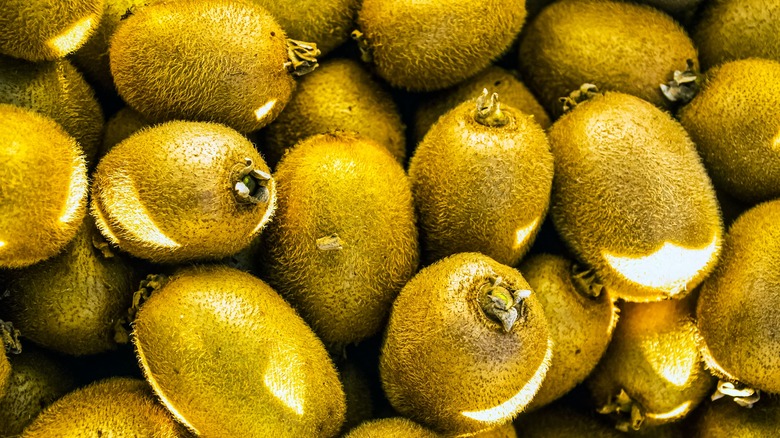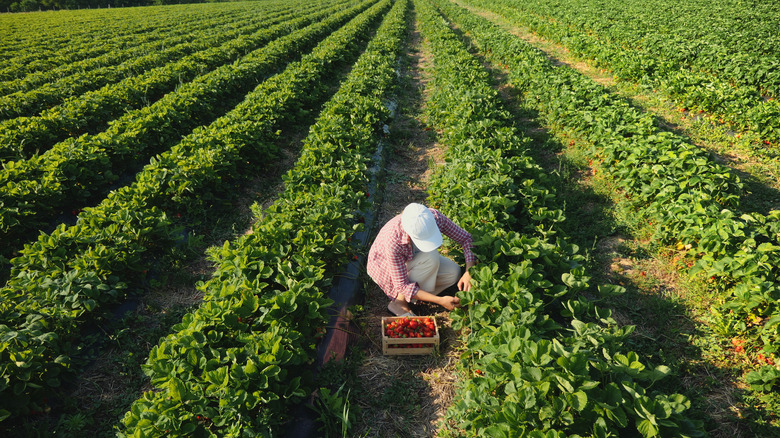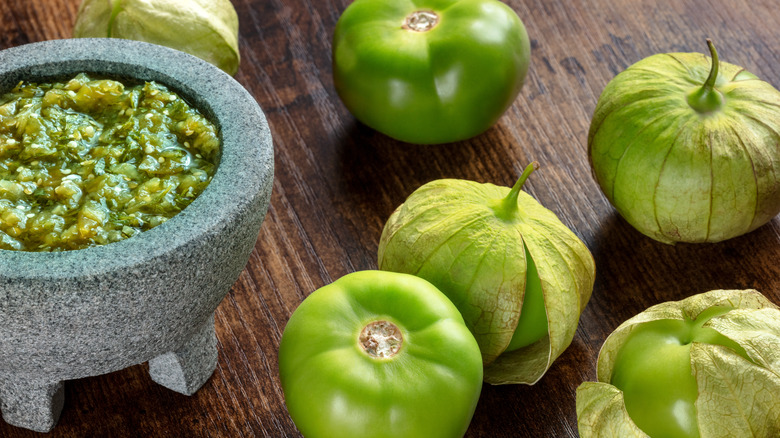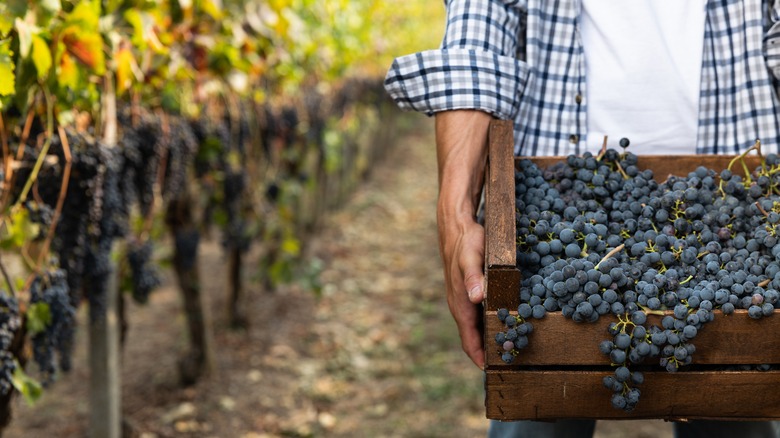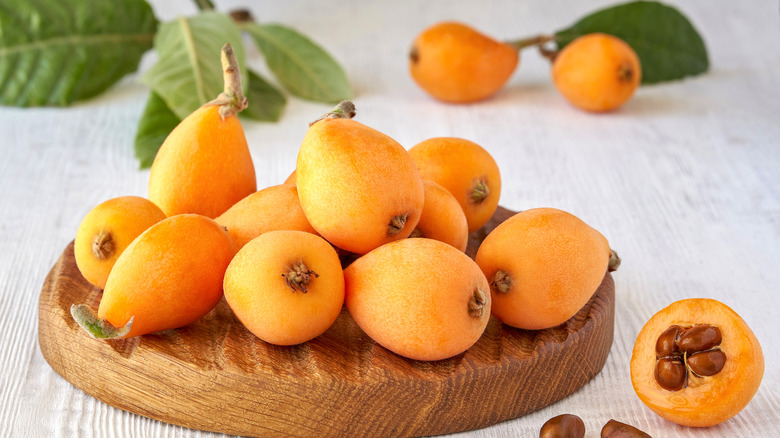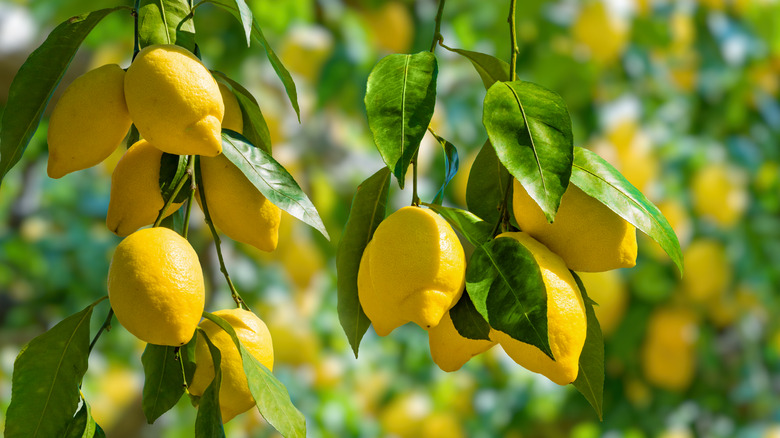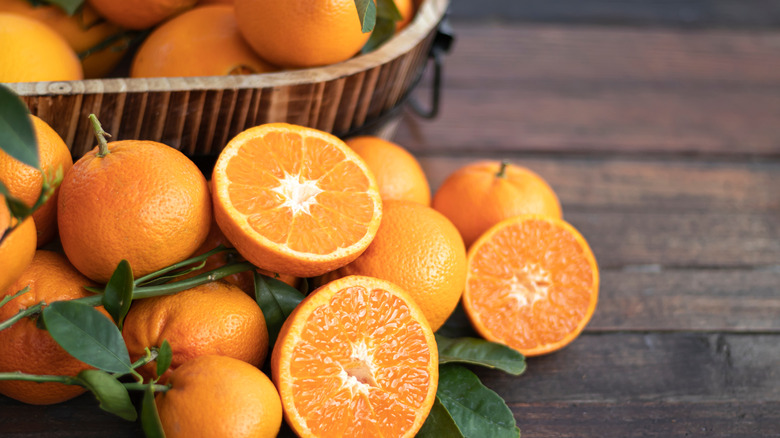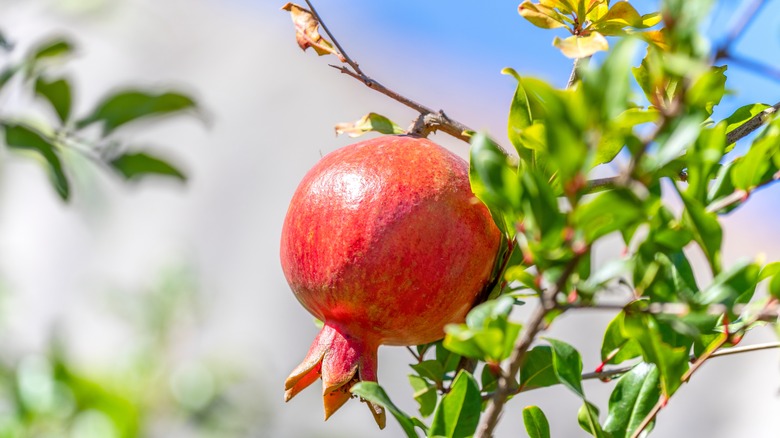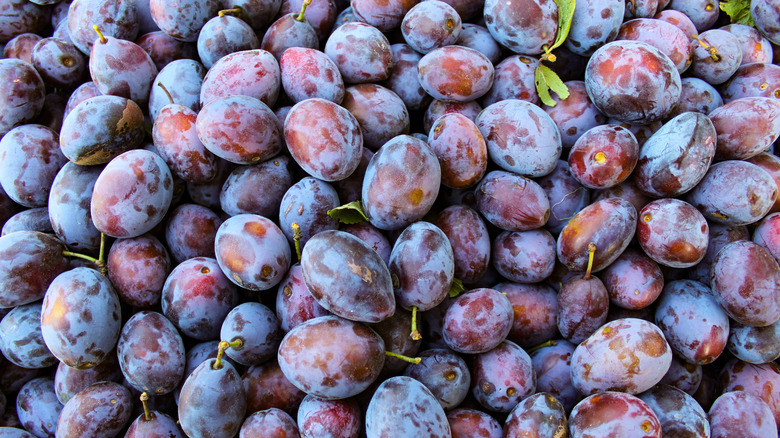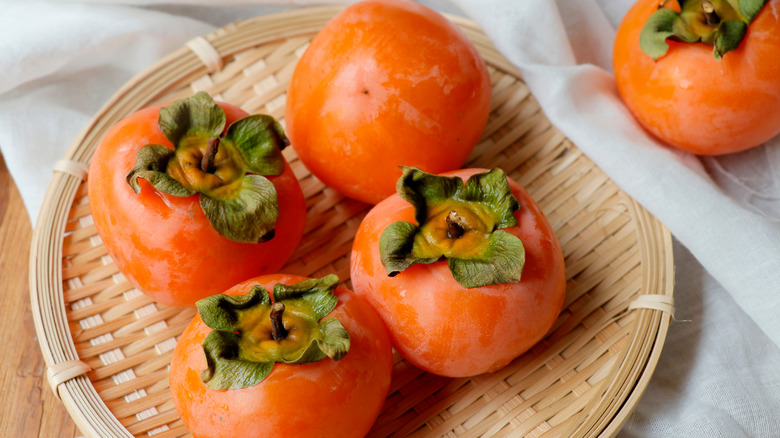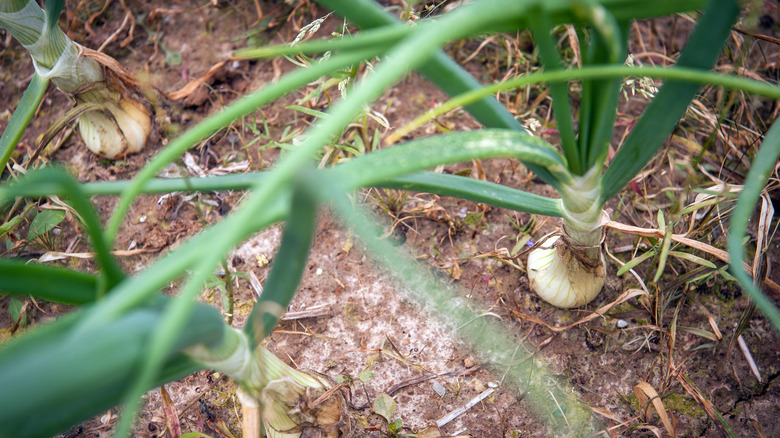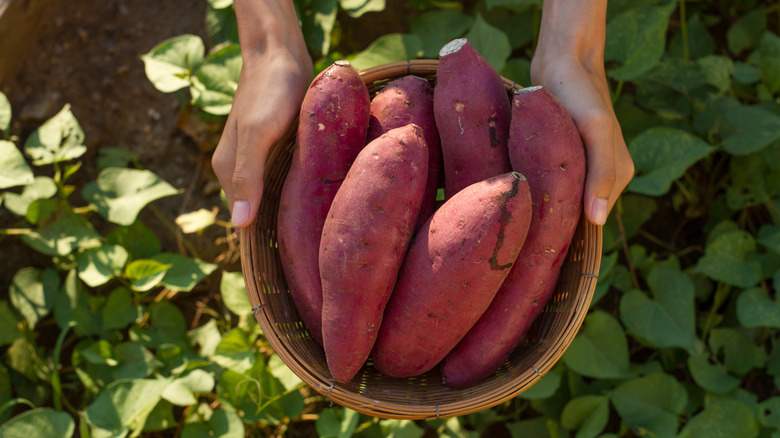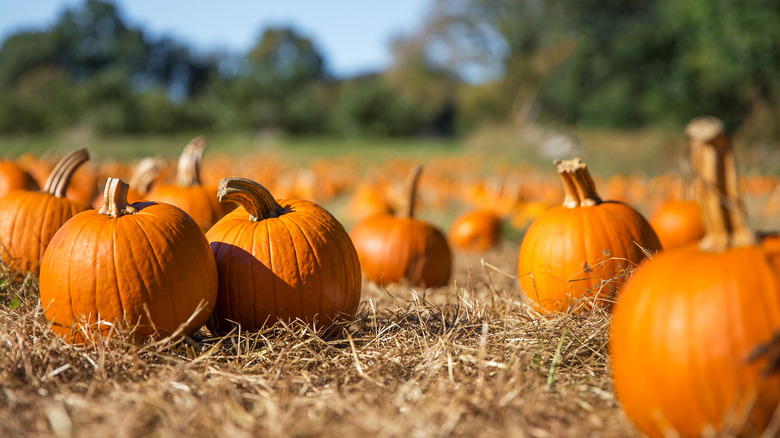15 Best Plants To Grow In USDA Zone 9
USDA hardiness zone 9 reaches across the southern United States, notes the Library of Congress, including northern Florida and parts of Georgia, Louisiana, and a vast swath of Texas, as well as in pockets across the southwest, such as New Mexico, Utah, Arizona, and Nevada. This zone also encompasses a significant portion of Hawaii and runs up the west coast to include nearly the entire Pacific edge of California, Oregon, and Washington moving significantly far inland across all three states.
These areas of the country experience winters that just barely reach freezing levels, with the most extreme low-end temperatures recorded at 20 degrees Fahrenheit in zone 9a. Masterclass notes that zone 9 experiences a vast growing season that only eliminates January as a viable growing month. This means that you can plant a nearly year-round garden of vegetables, fruits, and flowers to support the aesthetic goals of your landscaping and any approach to self-sustainable nutrition that you and your family find important.
Zone 9 offers a lot in terms of growth potential, and there are lots of options for a well-rounded garden that's always producing great nutrition and scenic views in abundance.
1. Kiwis or kiwiberries
Kiwis (actinidias) are a great addition to the home garden across virtually all of North America. If you live in zone 9, you can grow this much-loved and large vine fruit with little trouble. Another option is the kiwi berry or hardy kiwi fruit that grows to about the size of a grape and doesn't require peeling, via Savvy Gardening.
Either option will thrive in well-draining soil, but it's important to plant a good number of kiwi plants (more than you intend to keep) because kiwis cannot self-pollinate.
2. Strawberries
Strawberries (fragaria x ananassa) are able to grow in many parts of the United States, and zone 9 is no exception (zones 5 through 10, specifically). Planting strawberry runners or bare-root plants in fertile, alkaline soil are the typical means of propagating new, short, shrub-like plants.
Bonnie Plants estimates that the typical strawberry plant will be ready to harvest between June and September while caring for the leafy aerial growth occurs all year. In the colder months, cutting down the leaves (while leaving the crown intact) will ensure that your plant is primed for berries in the next summer.
3. Tomatillos
Tomatillos (physalis philadelphica) are visually similar to tomatoes and thrive in standard garden soil. Tomatillos are an essential crop in Mexico and produce delicious pulpy juice that makes stunning salsas. Good Housekeeping reports that tomatillo plants are prolific fruit producers and continue to put out these delicious staple fruits from first bloom until the frost. They grow well in zones 5 though 11 (as an annual up through zone 9 and a perennial in warmer climes).
4. Grapes
Zone 9 can support the healthy and abundant growth of both table grapes and those used in winemaking. Adding a tall, crawling grape (vitis) vine to your garden is fairly simple, but caring for these versatile fruits takes a little work and well-draining soil. You'll want to trellis the vines to provide them with much-needed support. Gardening Know How suggests building your supportive arbor or trellis before planting the grape vines. Grapes grow from zone 4 through zone 10, according to Monrovia.
5. Loquats
Loquat trees (eriobotrya japonica) grow tall over time and produce an abundance of wonderful fruit and thrive in zones 8 to 10, according to the Clemson University Extension. They are small, fuzzy fruits that grow well in full sun or partial shade, and in well draining soil.
Epic Gardening reports that many American cities have used loquat trees as foliage additions in neighborhoods and urban settings, providing both the shade that is sought after and a tasty snack for savvy pickers who know what they're looking at.
6. Lemons
Lemons (citrus limon) grow freely in slightly acidic soil in zone 9 to 11, with a favorite variety being the Meyer lemon, according to SF Gate. New lemon trees should be planted in the spring in order to allow them to root and take in the heat and extended sunlight that will soon follow. Lemons can be grown in containers to support movement indoors during particularly cold stretches, or directly in the outdoor soil. The versatility makes them a great asset for all types of gardeners and growers.
7. Oranges
Orange trees (citrus x sinensis) grow well in zones 8 to 11. Oranges trees grow tall and require slightly acidic soil. They are found across large swaths of the southern states, but they will easily thrive in any zone 9 environment. Protecting fruits during cold snaps is essential though. The Louisiana State University Extension reports that protecting citrus of all types is a must if the temperature drops below freezing and remains at this low for six hours or more.
8. Pomegranates
Pomegranates (punica granatum) grow best in dry, warm climates and deep, loamy soil. They will thrive starting in zone 8, according to Harvest to Table, and rise to a medium height. This makes zone 9 landscapes a great medium for cultivating pomegranate plants in order to enjoy this wonderful addition to the fruit basket or a salad that makes use of the deep ruby seed segments within the papery fruits.
Growing pomegranates requires well-draining, loamy soil that incorporates sand or clay elements. These plants also do best in full sun and shelter from the wind.
9. Plums
Plums (prunus domestica) are easy to care for and make a great addition to the home garden in zones 4 through 9 (via Raintree Nursery). Plums require full sun and sandy soil that has a pH measured between 5.5 and 6.5. Plum trees do best with regular pruning and routine fertilizer addition in the early part of each new growing season (pushing this additive use back a bit after the second year). Using plums in the kitchen is amazingly worthwhile. They can be added to recipes or eaten as is for a delicious treat.
10. Persimmons
Persimmons (diospyros kaki) aren't a typical addition to the garden, but Plant Me Green notes that persimmon trees burst into autumn colors that dazzle the onlooker, and the fruits themselves are a phenomenal snack for anyone with a love of fruit. They require warm, well draining soil with slight acidity and can reach significantly tall heights if given the opportunity.
Persimmons do best when enjoying full sunlight, and are well at home between zones 5 and 9. Plant Me Green suggests an Asian persimmon tree if your garden area is constrained because these varieties are self-fertile.
11. Onions
Onions (alliums) are grown in a number of unique climate zones (zone 5 and above) and require well draining, highly fertile soil. One of the most popular in all of the United States has to be the Vidalia onion, grown in the heart of Georgia. Onions are segmented into day lengths, and different varieties will need a varying number of sunlight hours to successfully produce the bulb that's harvested for consumption, according to SF Gate. Selecting a day length variety that best suits your area will set you up for the greatest level of success with your onion crop.
12. Sweet potatoes
Zone 9 Garden estimates that sweet potatoes (ipomoea batatas) are both one of the easiest and one of the most popular plants to cultivate in this part of the country (zones 9 to 12, and even in zones 7 and 8 with overwintering techniques, via TC Permaculture). Loose, sandy loam soil is a must, and planting typically occurs in late spring, but later planting can be done to create a lengthier harvest period, for those who aren't saving a large batch of sweet potatoes in a root cellar.
13. Pumpkins
Growing pumpkins (cucurbita) is a great way to augment your October decorating plans in USDA zones 3 to 9. Pumpkins are a great crop for food production as well, though. Planting should occur in May or June in well-draining soil with lots of organic matter in the mix. The San Diego Seed Company reports that you should take care to water the soil rather than leafy growth for the best results.
Late spring or early summer planting is the perfect way to bring pumpkin flavors into your fall lineup, according to the Texas A&M University Extension.
14. Irises
Irises (iris) are a wonderful flower variety to include in a home garden in zones 3 through 10 and require well draining, fertile soil. Almanac notes that there are more than 250 unique iris varieties that you can bring into your home's garden, and some exhibit a trait that allows them to flower more than once per growing period. Irises are hardy and stable flowers that grow to about two or three feet and can withstand sudden shifts in temperature. They are also great for attracting pollinators to your garden.
15. Roses
Roses (rosa) are the perfect flower to grow for anyone who loves bringing a sense of romance into the garden (USDA Zones 7 to 9, with some varieties performing well in zones 10 and higher, via Rogue Valley Roses). In zone 9, rose bushes can bloom all year, rather than the shortened schedule that colder areas experience. They can be tall or short bushes, depending on the variety, and require moist but well draining soil.

